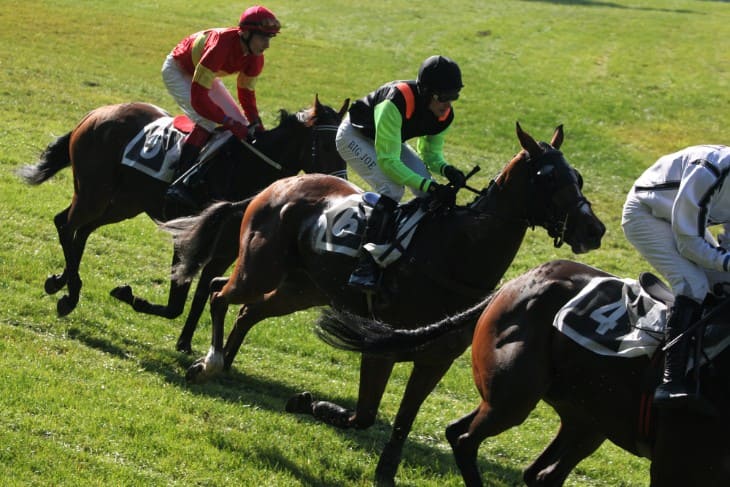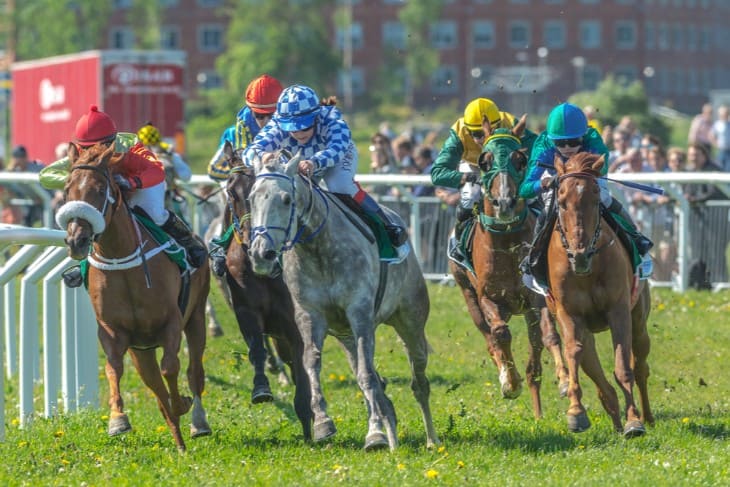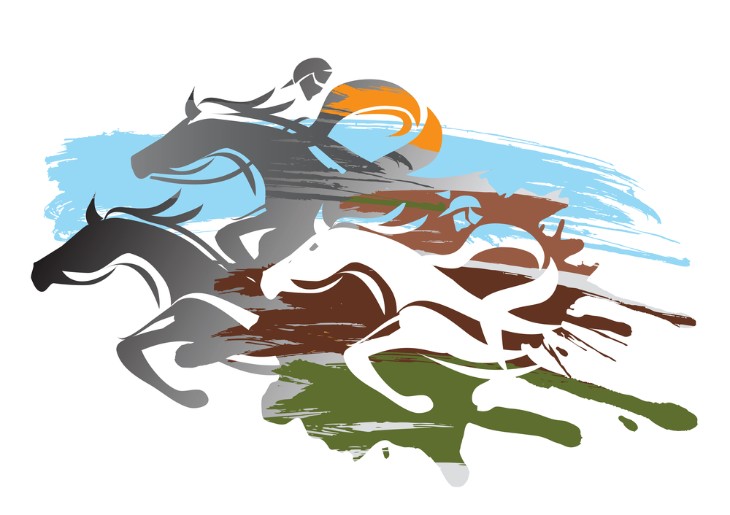Introduction
Who invented horse racing? Was it Romans, or ancient Greeks? Was it China maybe? Who invented horse racing in the modern form, the form we know today? It’s hard to give a straight answer but we definitely know it’s been an integral part of human life for thousands of years. Of course, entertainment was one of the main reasons, but there was much more. Horse racing has always been a display of wealth, power, and prestige. Let’s take a closer look at horse racing in ancient times:
Ancient Persia
In ancient Persia, horse racing was deeply intertwined with the country's rich cultural heritage and the noble class's fascination with horses. The Persians, known for their horsemanship skills, organized grand horse racing events that attracted the elite and commoners alike. These races often featured magnificent Arabian horses, a breed highly prized for its speed and endurance. The events were not only a showcase of the horses' capabilities but also an opportunity for the Persian aristocracy to flaunt their wealth and influence. The races were not just tests of speed; they were also displays of the riders' exceptional riding skills, making them thrilling spectacles for the spectators.
Horse racing in ancient Persia extended beyond mere entertainment; it played a significant role in selecting superior horses for military purposes and breeding programs. The Persians recognized the strategic importance of having swift and robust horses in warfare, and horse racing served as a means to identify the best horses for their cavalry. The sport also had a cultural significance, with poets and writers often glorifying the beauty and grace of horses in their works. These ancient Persian horse racing traditions laid the foundation for the enduring fascination with horses and racing, leaving an indelible mark on the sport's evolution throughout history.
Ancient Greece
In Ancient Greece, horse racing held great cultural and athletic significance. The Greeks conducted horse races as part of the Olympic Games, one of the most important sporting events in ancient Greece. The Olympic Games, first held in 776 BCE in Olympia, featured various athletic contests, including horse racing. The races were primarily chariot races, where horse-drawn chariots competed in a large, purpose-built arena called the Hippodrome.
Chariot racing in Ancient Greece was a spectacle enjoyed by both the participants and the audience. Skilled charioteers, often slaves or professionals, raced their chariots, showcasing their expertise in manoeuvring the vehicles. The races were fiercely competitive and were a source of great pride for the city-states that produced successful charioteers. Winners were celebrated as heroes, and their victories brought glory to their hometowns.
Chariot racing was not limited to the Olympic Games; it was also a feature in other prominent festivals and games held throughout ancient Greece. These races were not only athletic competitions but also occasions for communities to come together, celebrate their culture, and honour the gods. The sport's popularity endured for centuries, leaving a lasting legacy in the ancient world and influencing the development of horse racing in later civilizations.

Ancient Rome
In ancient Rome, chariot racing was a beloved and incredibly popular sport, deeply ingrained in the culture of the time. Chariot races were held in vast arenas called circuses, the most famous of which was the Circus Maximus in Rome. These events were thrilling spectacles, with charioteers racing around a central spine, a barrier that divided the track. The charioteers represented different factions distinguished by their colours, and supporters of these factions were fervently devoted, often forming intense rivalries akin to modern sports fandom.
The races in ancient Rome were not just entertainment; they were political and social events. Emperors and politicians used chariot races to gain popularity and support. The charioteers, usually slaves or freedmen, became celebrities, and successful ones could amass significant wealth and fame. The sport also played a role in religious ceremonies, with races dedicated to various gods and goddesses, adding a spiritual dimension to the events.
Chariot racing was a dangerous pursuit, and charioteers faced significant risks. Accidents were common, and the sport was known for its fierce competition and occasional violence both on and off the track. Despite the risks, chariot racing remained immensely popular throughout the Roman Empire, continuing even after the empire's decline in the West. The influence of Roman chariot racing can be seen in its lasting impact on the concept of organized horse racing, serving as a precursor to the modern sport enjoyed worldwide today.
Byzantine Empire
Horse racing continued to flourish in the Byzantine Empire, inheriting and adapting many of the traditions from ancient Rome. The Hippodrome of Constantinople, which was originally built by the Roman Emperor Septimius Severus in the 3rd century CE, became the epicentre of chariot racing in the Byzantine Empire. Chariot races held in the Hippodrome were not merely sporting events; they were highly significant social and political gatherings, drawing enormous crowds and playing a pivotal role in the Byzantine cultural landscape.
The Byzantines, much like the Romans, had different factions in chariot racing, each associated with a specific colour. The Blues, Greens, Reds, and Whites were the primary factions, and supporters of these teams were incredibly passionate. The rivalries between these factions were intense and often led to heated clashes, not only within the Hippodrome but also spilling into the streets of Constantinople.
Emperors and political figures understood the power of the Hippodrome and used it to gain public support. Chariot races were occasions for emperors to demonstrate their connection with the common people, and victories in the races were celebrated as a sign of imperial favour. Political factions and religious groups also used the races as a platform to express their views, making the Hippodrome a multifaceted arena for social and political interactions.
Chariot racing in the Byzantine Empire continued until the 12th century when events like the Fourth Crusade in 1204 significantly impacted the empire's stability. The Crusaders pillaged Constantinople, leading to the decline of the Byzantine Empire and, subsequently, the end of organized chariot racing in the Hippodrome. However, the legacy of Byzantine chariot racing endured, influencing later forms of horse racing and contributing to the historical tapestry of the sport.
Horse Racing in England: Birth of Modern Horse Racing
Modern horse racing, as we know it today, has deep roots in the United Kingdom and has evolved over centuries into a sophisticated and globally popular sport. The origins of organized horse racing in the UK can be traced back to the 12th century when English knights returning from the Crusades brought back swift Arabian horses, which were then crossbred with local horses. This infusion of Arabian blood greatly enhanced the speed and endurance of the English horse population, laying the foundation for competitive horse racing.
By the 16th century, horse racing had become a formalized sport in England. King James I established the first official racecourse in Newmarket in 1605, and from there, the sport gained momentum. During the reign of Queen Anne in the early 18th century, horse racing became a professional sport with standardized rules and regulations. The Jockey Club, founded in 1750, played a significant role in shaping the sport's governance and ensuring the integrity of horse racing in the UK.
The 19th century marked a period of rapid expansion for horse racing, with the establishment of numerous racecourses across the country. The introduction of the thoroughbred breed, a result of careful breeding and selection, further elevated the quality of racing horses. The Epsom Derby, first run in 1780, and the St. Leger Stakes, established in 1776, became prestigious races and are still considered classics in the UK racing calendar. The concept of flat racing, where horses compete on a level track without obstacles, became predominant in the UK and many other parts of the world.
In the 19th and early 20th centuries, horse racing spread to various parts of the British Empire, including Australia, India, and South Africa, leaving a lasting legacy in these regions. With the advent of the 20th century, horse racing continued to grow and adapt. The introduction of new technologies, such as photo finishes and electronic timing systems, improved the accuracy of race results and enhanced the overall racing experience.
Horse Racing in the 20th Century
The 20th century saw significant global expansion and development in horse racing, turning the sport into a truly international phenomenon. In the United States, horse racing experienced a boom in popularity, with the establishment of iconic racetracks like Churchill Downs, home of the Kentucky Derby, and Belmont Park, host of the Belmont Stakes. The creation of the Breeders' Cup in 1984 further elevated the sport by offering a championship event that attracted top horses from around the world. American horse racing legends like Secretariat and Seattle Slew captured the public's imagination, making horse racing a mainstream entertainment option.
In Europe, horse racing continued to thrive, with major events like the Grand National in the United Kingdom, the Prix de l'Arc de Triomphe in France, and the Irish Derby in Ireland gaining international acclaim. The establishment of international competitions and the liberalization of breeding and racing regulations facilitated the movement of horses and expertise across borders. Simultaneously, countries in Asia, particularly Japan and Hong Kong, witnessed rapid growth in their horse racing industries. Japan, in particular, embraced horse racing with enthusiasm, developing a robust breeding program and hosting prestigious races like the Japan Cup, attracting top horses from all over the world.
Additionally, the 20th century saw the emergence of horse racing as a major industry in Australia. The Melbourne Cup, first run in 1861, grew in stature and became known as "the race that stops a nation," capturing the country's collective attention and becoming a significant cultural event. With advancements in broadcasting technology, horse racing reached broader audiences through television and later the internet, further globalizing the sport and connecting fans from different corners of the world. The internationalization of horse racing not only led to greater competition and higher stakes but also fostered a sense of camaraderie among racing enthusiasts on a global scale.
Horse Racing in the 21st Century
In the 21st century, horse racing has continued to evolve, embracing digital technologies to enhance the fan experience and ensure the sport's global reach. Online betting platforms have become prevalent, allowing enthusiasts to wager on races from anywhere in the world. High-definition live streaming and virtual reality experiences bring the excitement of the racetrack to viewers' screens, creating immersive spectacles for fans unable to attend in person. Additionally, there has been a heightened emphasis on equine welfare and safety, with advancements in veterinary care, track surfaces, and regulations designed to protect the well-being of horses and riders.

Major racing events like the Kentucky Derby, the Dubai World Cup, and the Grand National remain highlights of the racing calendar, attracting international audiences and substantial prize money. Furthermore, horse racing's global footprint has expanded with the rise of prominent races in Asia, including the Japan Cup and the Hong Kong International Races, further solidifying the sport's status as a truly worldwide phenomenon, and captivating fans across continents.
Summary
As you can see, it’s impossible to give a straight answer on who invented horse racing. Horse racing does not have a single inventor but has a rich history spanning ancient civilizations. In ancient Greece and Rome, chariot racing was prominent, showcasing skilled riders and fierce competition. In Ancient Persia, horse racing was popular among the nobility and played a role in selecting horses for military purposes. The Byzantine Empire continued the tradition, with the Hippodrome in Constantinople being a hub for chariot racing and political events. Modern horse racing as we know it emerged in the United Kingdom, evolving from centuries-old traditions and becoming a global phenomenon with technological advancements, international competitions, and a focus on equine welfare in the 21st century.
For more information:
- Legendary Horses in UK Racing History
- Famous Rivalries in UK Horse Racing History
- An In-depth Look at Horse Racing Sponsorship Deals
- The Use of Virtual Reality in Horse Racing







